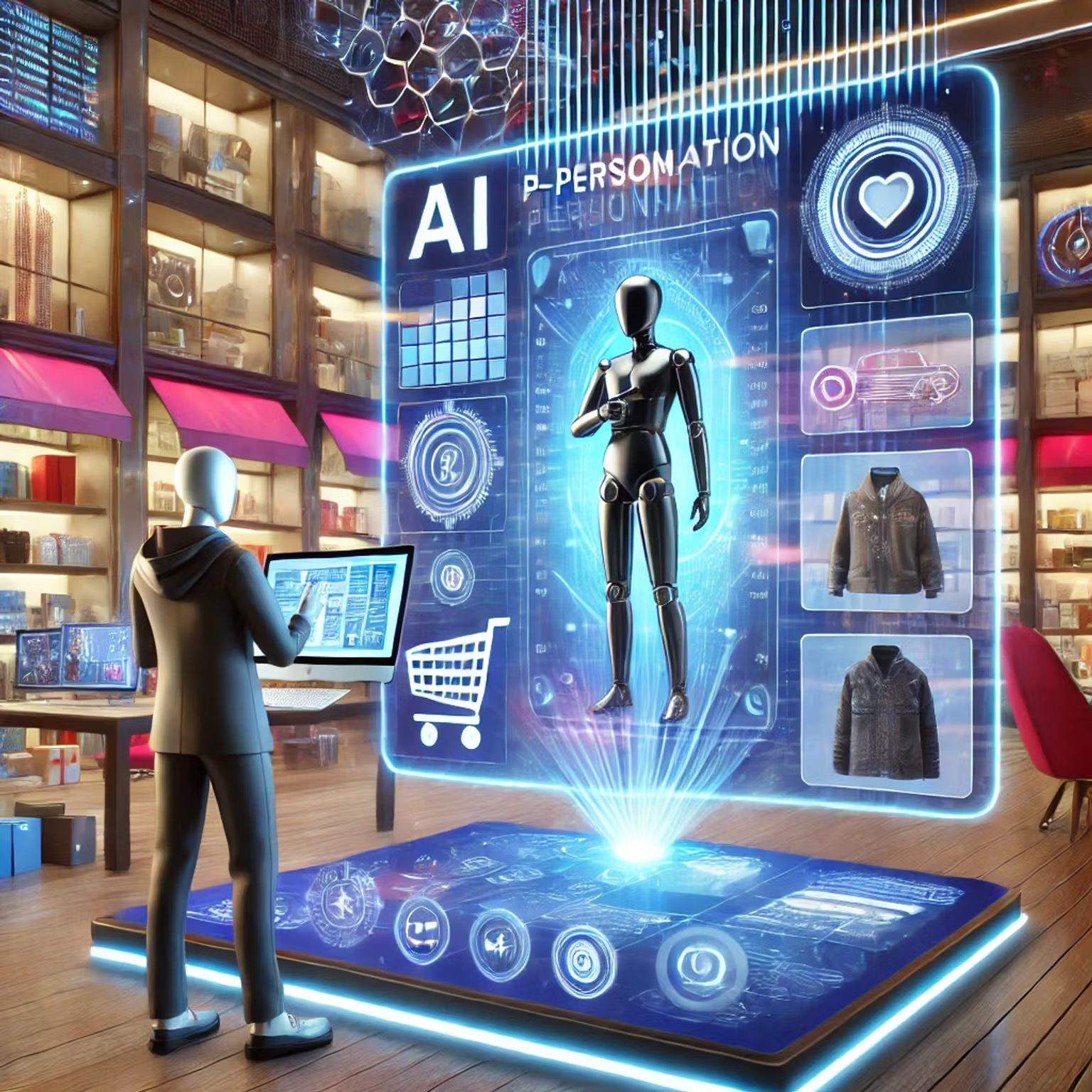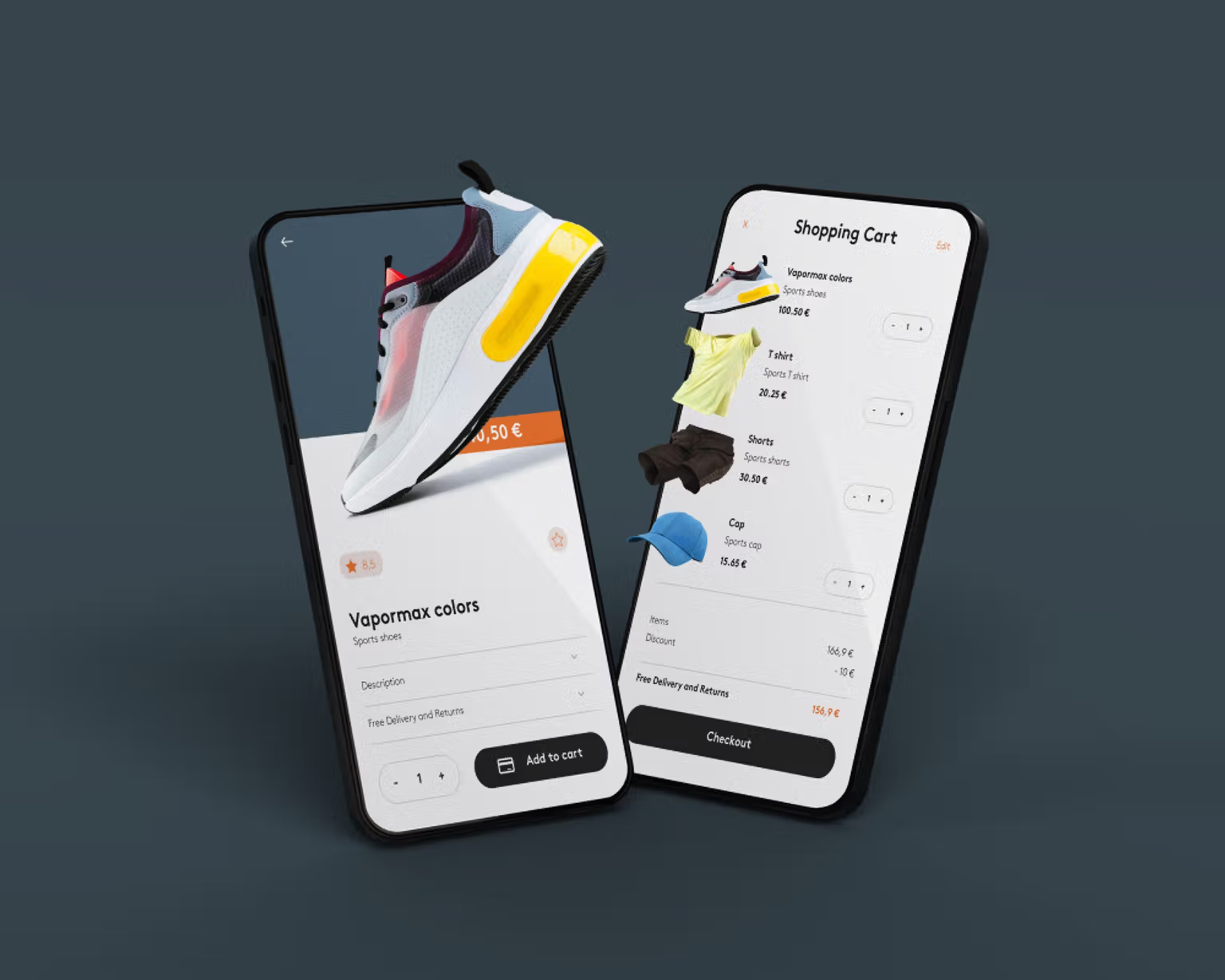Top 5 E-Commerce Platform Innovations to Watch in 2024
This article explores the top five platform-specific eCommerce innovations to watch this year.


As we move through 2024, the e-commerce landscape is experiencing unprecedented technological advancements that are reshaping how businesses operate and engage with customers. From AI-driven personalization to augmented reality, these innovations are transforming the e-commerce experience.
1. AI-Powered Personalization on Shopify
AI-powered personalization is revolutionizing how businesses interact with customers on Shopify. This technology allows online retailers to deliver highly customized shopping experiences by analyzing customer behavior, preferences, and past interactions. Here's how AI personalization is making a significant impact:
- Dynamic Product Recommendations: By analyzing browsing history and purchase patterns, AI algorithms can suggest products tailored to individual preferences, enhancing the likelihood of conversion. This level of personalization not only improves customer satisfaction but also boosts sales.
- Enhanced Customer Engagement: AI-driven chatbots provide real-time assistance, answering customer queries and guiding them through purchasing. These chatbots can handle routine inquiries, freeing human staff to focus on more complex issues. This improves efficiency and ensures customers receive prompt responses.
- Predictive Analytics: AI models can predict customer behavior, helping businesses optimize their marketing strategies. By understanding when and what customers will likely purchase, retailers can tailor their promotions and inventory management accordingly.

Source: Freepik
2. Social Commerce Innovations on TikTok
TikTok has rapidly evolved from a social media platform into a powerful e-commerce engine. Its unique blend of entertainment and shopping has captured the attention of brands and consumers alike. Here’s how TikTok is reshaping the e-commerce landscape:
- Live-Stream Shopping: TikTok's live-stream shopping events allow influencers and brands to showcase products in real time, engaging audiences and encouraging immediate purchases. This interactive shopping experience bridges the gap between entertainment and commerce, driving higher conversion rates.
- Influencer Marketing: TikTok's algorithm effectively matches influencers with target audiences, enabling brands to reach their ideal customers. Influencers create authentic content that resonates with their followers, increasing brand visibility and trust.
- Shoppable Ads: TikTok offers shoppable ad formats that allow users to purchase products directly from their feeds. This seamless integration of shopping into the TikTok experience simplifies the buying process and enhances user engagement.
- Global Reach and Virality: TikTok’s algorithm is designed to promote content that captures user attention, making it easier for products to go viral. This potential for rapid exposure has attracted businesses looking to expand their reach and attract new customers.
3. Mobile-First Strategies on BigCommerce
With mobile devices accounting for a significant portion of e-commerce traffic, optimizing for mobile is no longer optional. BigCommerce is leading the charge with mobile-first strategies that enhance the shopping experience:
- Responsive Design: BigCommerce's responsive design ensures that websites automatically adapt to various screen sizes, providing a consistent and user-friendly experience across devices. This is crucial for reducing bounce rates and keeping users engaged.
- Mobile Payment Solutions: Integrating mobile payment options like Apple Pay and Google Pay simplifies the checkout process, reducing friction and increasing conversion rates. Customers appreciate the convenience of one-click payments, which leads to higher customer satisfaction and loyalty.
- Accelerated Mobile Pages (AMP): BigCommerce supports AMP, a framework that improves mobile page loading speed. Faster load times lead to higher engagement and lower bounce rates, ultimately driving more sales.
- Push Notifications: BigCommerce allows businesses to leverage push notifications for personalized marketing messages. By reaching customers directly on their mobile devices, brands can drive engagement and encourage repeat purchases.
4. Augmented Reality (AR) on Magento
Augmented reality is transforming how consumers interact with products online, and Magento is at the forefront of this innovation. AR technology bridges the gap between physical and digital shopping experiences:
- Virtual Try-Ons: Magento’s AR features enable customers to visualize how products will look in their real-world environments. This is particularly valuable for fashion, furniture, and home decor retailers, as it reduces uncertainty and enhances confidence in purchasing decisions.
- 3D Product Visualization: AR allows customers to explore products in 3D, offering a more comprehensive understanding of features and design. This interactive experience increases engagement and reduces the likelihood of returns.
- In-Store Experiences Online: Magento's AR technology replicates in-store experiences, allowing customers to explore products as they would in a physical store. This level of interaction increases customer satisfaction and loyalty.
- Enhanced Product Information: AR overlays provide detailed product information, including specifications and usage tips, helping customers make informed decisions.

5. Subscription Models on WooCommerce
Subscription-based business models are gaining traction for their ability to generate consistent revenue and build customer loyalty. WooCommerce provides robust support for implementing subscription services:
- Flexible Subscription Plans: WooCommerce allows businesses to offer customizable subscription plans, catering to diverse customer needs. Whether it’s monthly, quarterly, or annually, businesses can tailor their offerings to suit their audience.
- Automated Billing and Management: WooCommerce’s automated billing system simplifies managing recurring payments, reducing administrative overhead and ensuring customers have a seamless experience.
- Increased Customer Retention: Subscription models foster long-term relationships with customers, encouraging repeat purchases and brand loyalty. Customers appreciate the convenience of regular deliveries, enhancing satisfaction and reducing churn.
- Diverse Product Offerings: WooCommerce supports subscriptions for various products, from physical goods to digital content and services. This versatility allows businesses to diversify their revenue streams and reach new markets.
Conclusion
As we navigate 2024, these platform-specific innovations are set to define the future of e-commerce. From AI-driven personalization on Shopify to augmented reality experiences on Magento, these technologies offer exciting opportunities for businesses to engage customers, streamline operations, and drive growth. By embracing these innovations, businesses can stay competitive and meet the evolving demands of today’s tech-savvy consumers.
These advancements highlight the importance of adopting cutting-edge technologies to transform your e-commerce business in 2024.